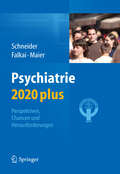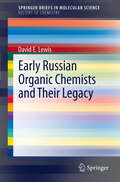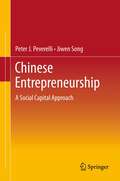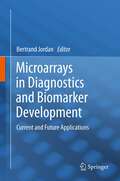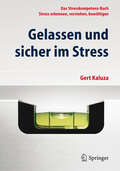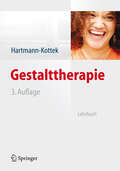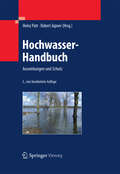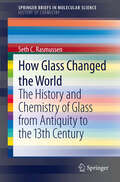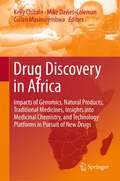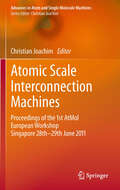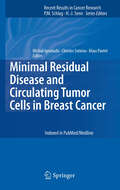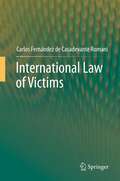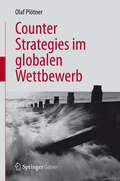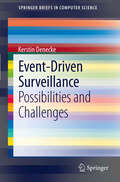- Table View
- List View
The Quintessence of Intercultural Business Communication
by Melanie MollSuccessful business communication is more than simply speaking your client's language. At the heart of all effective communication lies a fundamental understanding of human behavior. The natural result of globalization is a level of behaviors that we all share and expect. However, underneath this level are many other influencing factors. We tend to view the situation around us according to our own expectations which are often shaped by our cultural backgrounds. What happens, though, when our cultures are so different that the expectations collide? This book combines theory and practice in a way that helps you as a busy intercultural manager understand what others are communicating to you and those around you. We take apart real examples of intercultural business interaction and show you how deeply embedded cultural norms are found within a simple conversation. Then we offer you important tools and principles that you can use to improve your own intercultural business communication. After reading this book, you should have a good understanding of the basic culture types, and be able to identify most cultures based on the principles described here. Additionally, you will know which social issues, attitudes, and values appear even in the most rational business negotiation. Most importantly, your cultural awareness will help you build successful and lasting relationships with your clients across regional and global boundaries.
Niere und Ableitende Harnwege
by Katja Segerer Christoph Wannerjan Steffel Thomas LuescherDer Band aus der Reihe ,,Module Innere Medizin" ermöglicht Lernenden den Blick aufs Ganze. Systematisch stellen die Autoren das gesamte Organsystem Niere und ableitende Harnwege dar: von der Anatomie über die Physiologie bis zur Diagnostik und Therapie von Erkrankungen. Wegen seiner Praxisnähe eignet sich der Band nicht nur für Studierende, sondern auch für Ärzte in der nephrologischen Aus- und Weiterbildung.
Psychiatrie 2020 plus
by Peter Falkai Frank SchneiderUnter den medizinischen Disziplinen hat die Psychiatrie und Psychotherapie die größte Zukunft: In den letzten Jahrzehnten hat das Fach in Forschung und Versorgung Quantensprünge durchlaufen. Diese Entwicklung setzt sich fort. Herausforderungen sind die weitere Erforschung und der zunehmende Behandlungsbedarf im Bereich psychischer Erkrankungen. In dem Buch "Psychiatrie 2020" skizziert die Deutsche Gesellschaft für Psychiatrie, Psychotherapie und Nervenheilkunde (DGPPN) neben einer Übersicht über die Entwicklung des Faches eine Vision für das Jahr 2020. Psychiatrie 2020 plus, ist nun die erweiterte und aktualisierte Auflage der Bestandsaufnahme und Vision für das Jahr 2020.
Early Russian Organic Chemists and Their Legacy
by David E LewisThe organic chemists of Russia during the pre-revolutionary period included some of the most creative and talented chemists of the nineteenth and early twentieth centuries. Indeed, this is attested by the number of reactions and empirical rules bearing their names. This volume is of interest for both historians of chemistry and organic chemists wishing to discover more about the historical development of their discipline in Russia. From the founding of the Russian Academy of Sciences by Peter the Great in 1725 to the early years of the nineteenth century, Russian organic chemistry was largely in the hands of foreign scientists. However, the Russification of organic chemistry in Russia had begun before the middle of the nineteenth century, and reached its zenith during the last half of the same century, by which time vibrant schools of chemistry had arisen in the eastern city of Kazan', at Moscow and at St. Petersburg. By the end of the century, the Chairs of organic chemistry at universities throughout the Russian empire were occupied by Russian chemists, almost half of them trained at Kazan'. This volume discusses the contributions of these organic chemists which include: the structural theory of organic chemistry, empirical rules for addition and elimination, reactions involving carbon nucleophiles, such as the aldol reaction and alcohol synthesis using organozinc nucleophiles, the discovery of sulfoxides and sulfonium salts, and a range of important redox reactions.
Morbus Menière
by Helmut SchaafIn dem Band erläutert der Autor die typischen Anzeichen des Morbus Menière, er legt dar, was man über die Krankheit wissen sollte und welche Behandlungskonzepte es gibt. Alle Aspekte der Erkrankung - Grundlagen, Auswirkungen und Therapiemöglichkeiten - sind leicht verständlich zusammengefasst, so dass Betroffene und behandelnder Arzt gleichermaßen davon profitieren. Die neu bearbeitete 7. Auflage informiert über aktuelle medizinische Möglichkeiten und Grenzen und weist auf verfeinerte psychosomatische Vorgehensweisen im Umgang mit der Krankheit hin.
Chinese Entrepreneurship: A Social Capital Approach
by Jiwen Song Peter J. PeverelliEntrepreneurship is hot. China is hot. Combining these two concepts could therefore be a dangerous act, as it may cause overheating. Chinese entrepreneurs are indeed the subject of a rapidly growing body of literature, academic and popular. However, the bulk of it tends to focus on a few aspects. There are the biographies of 'famous' entrepreneurs. While informative, these are usually of a non-academic nature. Academic studies tend to focus on the political and economic environment in which present day Chinese entrepreneurs have to operate. Both types of publications slight the entrepreneurial identity. This study aims at filling this gap with its core question: why do some people become entrepreneurs? The authors have analysed the life stories of a number of Chinese private entrepreneurs to reveal how the entrepreneurial identity of each of them has emerged at the cross section of an number of other identities. This book therefore contributes to a better understanding of Chinese entrepreneurship and the study of entrepreneurship in general.
Microarrays in Diagnostics and Biomarker Development
by Bertrand JordanMicroarray technology has made strong progress over the past decade, and there have also been significant changes in application areas, from nucleic acids to proteomics and from research to clinical applications. This book provides a comprehensive overview of microarrays in diagnostics and biomarker development, covering DNA, peptide, protein and tissue arrays. The focus is on entities that are in actual clinical use, or quite close, and on recent developments, such as peptide and aptamer arrays. A further topic is the miniaturisation towards "nanoarrays", which is expected to have great potential in clinical applications. Relevant issues of bioinformatics and statistical analysis of array data are discussed in detail, as well as the barriers to the commercialisation of array-based tests and the vexing IP issues involved. Thus, the book should be very useful tor active array users as well as to newcomers seeking to make the best choice between different technologies.
Microarrays in Diagnostics and Biomarker Development: Current and Future Applications
by Bertrand JordanMicroarray technology has made strong progress over the past decade, and there have also been significant changes in application areas, from nucleic acids to proteomics and from research to clinical applications. This book provides a comprehensive overview of microarrays in diagnostics and biomarker development, covering DNA, peptide, protein and tissue arrays. The focus is on entities that are in actual clinical use, or quite close, and on recent developments, such as peptide and aptamer arrays. A further topic is the miniaturisation towards “nanoarrays”, which is expected to have great potential in clinical applications. Relevant issues of bioinformatics and statistical analysis of array data are discussed in detail, as well as the barriers to the commercialisation of array-based tests and the vexing IP issues involved. Thus, the book should be very useful tor active array users as well as to newcomers seeking to make the best choice between different technologies.
Der Lebensrückblick in Therapie und Beratung
by Andreas Maercker Simon ForstmeierUrsprünglich wurde allein in der Psychoanalyse die biografische Selbsterforschung als therapeutischer Ansatz gepflegt, andere Therapieschulen distanzierten davon. Inzwischen belegen Forschungsergebnisse die Wirksamkeit der Lebensrückblick-Therapie und das Interesse an dem Therapieansatz wächst - über alle psychotherapeutischen Schulenorientierungen hinweg. In dem Buch stellen die Autoren die Grundlagen, Einsatzbereiche, spezifischen Methoden und das Potenzial der Lebensrückblick-Therapie vor: als altersunabhängigen- und schulenübergreifenden Ansatz.
Gelassen und sicher im Stress
by Gert Kaluza"Gestresst!" - "Keine Zeit!" - "Ich weiß nicht, wo mir der Kopf steht!" Stress kennt fast jeder. Und viele leiden unter den negativen Folgen von Dauerstress. Was also tun? Gert Kaluza, Deutschlands führender Experte in Sachen Stressmanagement, zeigt vielfältige Handlungsmöglichkeiten auf und macht Mut für den eigenen Weg zu einem gelassenen und gesunden Umgang mit Stressbelastungen in Beruf und Alltag. Stress erkennen und verstehen: - Stress: Was ist das eigentlich? - Macht Stress krank? Wie Stress die Gesundheit gefährdet. - Was uns stresst: Belastungen in Beruf, Familie und Freizeit. - Persönliche Stressverstärker: Wie wir uns selbst unter Stress setzen. Stress bewältigen: Die 3 Säulen der Stresskompetenz (1) Instrumentelle Stresskompetenz: Den Alltag stressfreier gestalten, Anforderungen aktiv begegnen. (2) Mentale Stresskompetenz: Förderliche Einstellungen und Bewertungen entwickeln. (3) Regenerative Stresskompetenz: Ausgleich schaffen, entspannen und erholen. - Mit Checklisten, Übungen und zahlreichen Tipps. Das Stresskompetenz-Buch Für Stressgeplagte zur Selbsthilfe und als verständliche Begleitlektüre bei Stressbewältigungskursen oder im Rahmen einer Beratung. - Für Personalverantwortliche und Führungskräfte in Wirtschaft und Verwaltung. - Für Berater und Therapeuten, die stressbelastete Klienten unterstützen. - Für alle, die ihre persönliche Stresskompetenz weiterentwickeln wollen.
Gestalttherapie
by Lotte Hartmann-Kottek Uwe StrümpfelAls psychotherapeutisches Verfahren fasziniert die Gestalttherapie durch ihr unmittelbares, erlebnisorientiertes Vorgehen. In dem Band stellt die Autorin den Ansatz systematisch und zugleich praxisnah vor: Die theoretischen Grundlagen werden erläutert, Ergebnisse der Wirksamkeitsforschung diskutiert und die Anwendung der Methoden anhand von Fallbeispiele demonstriert. Dabei finden unterschiedliche Anwendungsbereiche und Settings wie Einzel- und Gruppentherapie, Familienaufstellungen oder Gestalttherapie für Kinder und Jugendliche Berücksichtigung.
Hochwasser-Handbuch
by Heinz Patt Robert JüpnerHochwasser verursacht jedes Jahr Sachschäden in Milliardenhöhe. Das Handbuch bietet die notwendigen Informationen, wenn es darum geht, die richtigen Maßnahmen zur Verbesserung des Hochwasserschutzes zu finden. Lösungsansätze und Berechnungsbeispiele liefert ein Autorenteam aus hochkarätigen Wissenschaftlern und Praktikern. In der Neuauflage finden die strategischen und technischen Entwicklungen der letzten 10 Jahre Berücksichtigung, die Darstellung der gesetzlichen Grundlagen wurde aktualisiert (u. a. EU-Hochwasserschutzrichtlinie).
Agile Service Development: Combining Adaptive Methods and Flexible Solutions (The Enterprise Engineering Series)
by Marc LankhorstEconomies around the globe have evolved into being largely service-oriented economies. Consumers no longer just want a printer or a car, they rather ask for a printing service or a mobility service. In addition, service-oriented organizations increasingly exploit new devices, technologies and infrastructures. Agility is the ability to deal with such changing requirements and environments. Agile ways of working embrace change as a positive force and harness it to the organization's competitive advantage. The approach described in this book focuses on the notion of a service as a piece of functionality that offers value to its customers. Instead of solely looking at agility in the context of system or software development, agility is approached in a broader context. The authors illustrate three kinds of agility that can be found in an agile enterprise: business, process and system agility. These three types of agility reinforce each other and establish the foundation for the agile enterprise. Architecture, patterns, models, and all of the best practices in system development contribute to agile service development and building agile applications. This book addresses two audiences. On the one hand, it aims at agile and architecture practitioners who are looking for more agile ways of working in designing and building business services or who are interested in extending and improving their agile methods by using models and model-based architectures. On the other hand, it addresses students of (enterprise) architecture and software development or service science courses, both in computer science and in business administration.
How Glass Changed the World
by Seth C. RasmussenGlass production is thought to date to ~2500 BC and had found numerous uses by the height of the Roman Empire. Yet the modern view of glass-based chemical apparatus (beakers, flasks, stills, etc.) was quite limited due to a lack of glass durability under rapid temperature changes and chemical attack. This "brief" gives an overview of the history and chemistry of glass technology from its origins in antiquity to its dramatic expansion in the 13th century, concluding with its impact on society in general, particularly its effect on chemical practices.
Pathways to Modern Chemical Physics
by Salvatore CalifanoIn this historical volume Salvatore Califano traces the developments of ideas and theories in physical and theoretical chemistry throughout the 20th century. This seldom-told narrative provides details of topics from thermodynamics to atomic structure, radioactivity and quantum chemistry. Califano's expertise as a physical chemist allows him to judge the historical developments from the point of view of modern chemistry. This detailed and unique historical narrative is fascinating for chemists working in the fields of physical chemistry and is also a useful resource for science historians who will enjoy access to material not previously dealt with in a coherent way.
Die Geschichte des ökonomischen Denkens
by Fritz Söllner"Die Geschichte des ökonomischen Denkens" gibt einen umfassenden und dennoch detaillierten Überblick über die Entwicklung der ökonomischen Theorie. Die Gesamtschau zeigt wichtige Zusammenhänge und Unterschiede zwischen den verschiedenen Denkrichtungen auf und erleichtert so deren Verständnis. Den Schwerpunkt bildet die Darstellung von Vorklassik, Klassik und Neoklassik. Neben dem "mainstream" geht das Buch ferner auf konkurrierende Schulen und auf neuere Entwicklungen ein. Nachdem die 3. Auflage umfassend überarbeitet und um Abschnitte zur experimentellen Ökonomie, Mikroökonometrie, sowie zur Neuen Außenhandelstheorie und Neuen Wirtschaftsgeographie erweitert wurde, liegt die 4. Auflage nun in einer korrigierten Version vor.
Drug Discovery in Africa
by Kelly Chibale Mike Davies-Coleman Collen MasimirembwaDrug discovery originating in Africa has the potential to provide significantly improved treatment of endemic diseases such as malaria, tuberculosis and HIV/AIDS. This book critically reviews the current status of drug discovery research and development in Africa, for diseases that are a major threat to the health of people living in Africa. Compiled by leading African and international experts, this book presents the science and strategies of modern drug discovery. It explores how the use of natural products and traditional medicines can benefit from conventional drug discovery approaches, and proposes solutions to current technological, infrastructural, human resources, and economic challenges, which are presented when attempting to engage in full-scale drug discovery. Topics addressed are varied; from African medicinal plants to marine bioprospecting, pharmacogenetics and the use of nanotechnology. This book brings together for the first time a collection of strategies and techniques that need to be considered when developing drugs in an African setting. It is an unprecedented and truly international effort, highlighting the remarkable effort made so far in the area of drug discovery research by African scientists, and scientists from other parts of the world working on African health problems.
Atomic Scale Interconnection Machines: Proceedings of the 1st AtMol European Workshop Singapore 28th-29th June 2011 (Advances in Atom and Single Molecule Machines)
by Christian JoachimThis volume documents the first International Workshop on Atomic Scale Interconnection Machines organised by the European Integrated Project AtMol in June 2011 in Singapore. The four sessions, discussed here in revised contributions by high level speakers, span the subjects of multi-probe UHV instrumentation, atomic scale nano-material nanowires characterization, atomic scale surface conductance measurements, surface atomic scale mechanical machineries. This state-of-the-art account brings academic researchers and industry engineers access to the tools they need to be at the forefront of the atomic scale technology revolution.
Minimal Residual Disease and Circulating Tumor Cells in Breast Cancer
by Christos Sotiriou Michail Ignatiadis Klaus PantelThis important book provides up-to-date information on a series of topical issues relating to the approach to minimal residual disease in breast cancer patients. It first explains how the study of minimal residual disease and circulating and disseminated tumor cells (CTCs/DTCs) can assist in the understanding of breast cancer metastasis. A series of chapters then discuss the various technologies available for the detection and characterization of CTCs and DTCs, pinpointing their merits and limitations. Detailed consideration is given to the relevance of CTCs and DTCs, and their detection, to clinical research and practice. The role of other blood-based biomarkers is also addressed, and the closing chapters debate the challenges facing drug and biomarker co-development and the use of CTCs for companion diagnostic development. This book will be of interest and assistance to all who are engaged in the modern management of breast cancer.
International Law of Victims
by Carlos Fernández de Casadevante RomaniAfter having ignored victims, only recently both domestic and international law have begun to pay attention to them. As a consequence, different international norms related to victims have progressively been introduced. These are norms generally characterized by a certain concept from the perspective of victims, as well as by the enumeration of a list of rights to which they are entitle to; rights upon which the international statute of victims is built. In reverse, these catalogues of rights are the states' obligations. Most of these rights are already existent in the international law of human rights. Consequently, they are not new but consolidated rights. Others are strictly linked to victims, concerning the following categories: victims of crime, victims of abuse of power, victims of gross violations of international human rights law, victims of serious violations of international humanitarian law, victims of enforced disappearance, victims of violations of international criminal law and victims of terrorism.
Counter Strategies im globalen Wettbewerb
by Olaf PlötnerDie Wettbewerbssituation etablierter Technologieunternehmen verändert sich mit neuen Kunden und Wettbewerben aus den Schwellen- und Entwicklungsländern rasant. Anders als gewohnt, verlangen die neuen Käufer über technisch perfekte Produkte hinaus preiswerte Alternativen. Der Autor diskutiert neue Strategien, mit denen sich Technologieunternehmen erfolgreich behaupten können und liefert Vorschläge für die Umsetzung bei der Produkt- und Preisgestaltung, der Mitarbeiter- und Organisationsentwicklung sowie beim Marken- und Vertriebsmanagement.
Event-Driven Surveillance
by Kerstin DeneckeThe Web has become a rich source of personal information in the last few years. People twitter, blog, and chat online. Current feelings, experiences or latest news are posted. For instance, first hints to disease outbreaks, customer preferences, or political changes could be identified with this data. Surveillance or early warning systems enable such detection of changes and support humans in getting information on changing situations. However, the variety of data that could be considered for surveillance is immense, ranging from sensor-measured values to collected counts and information extracted from natural language documents. Denecke's objective is to introduce the multiple possibilities and facets of surveillance and its applications. She first introduces the task of surveillance and provides an overview on surveillance in various domains. Next, the various information sources that are available and could already be used by surveillance systems are summarized. In the main part of the book, her focus is on unstructured data as a source for surveillance. An overview on existing methods as well as methods to be developed in order to process this kind of data with respect to surveillance is presented. As an example application, she introduces disease surveillance using Web 2.0, including corresponding methods and challenges to be addressed. The book closes with remarks on new possibilities for surveillance gained by recent developments of the Internet and mobile communication, and with an outline of future challenges.
Emerging Organic Contaminants and Human Health
by Damia BarceloThis volume provides an overview of the occurrence and fate of emerging contaminants, discusses advanced chemical analysis methods, toxicological and ecotoxicological effects as well as human exposure. One focus is on pharmaceuticals, in particular antibiotics, and the problems associated with their increased use in hospitals. Other covered emerging contaminants occurring e.g. in food, water, air or soil include brominated flame retardants, polar pesticides, phthalates, phosphate esters, perfluorinated compounds, personal care products, musk fragrances, disinfection byproducts, illicit drugs, and nanomaterials. The chapters written by experts are a valuable source of information for a broad audience, such as analytical chemists, environmental chemists and engineers, toxicologists, ecotoxicologists and epidemiologists working already in this field as well as newcomers.
Management of Severe Traumatic Brain Injury
by Bertil Romner Per-Olof Grände Knut Wester Niels Juul Terje Sundstrøm Carsten Kock-JensenIn order to reduce the number of deaths from severe head injuries, systematic management is essential. This book is a practical, comprehensive guide to the treatment of patients (both adults and children) with such injuries, from the time of initial contact through to the rehabilitation center. Sections are devoted to prehospital treatment, admission and diagnostics, acute management, and neurointensive care and rehabilitation. Evidence-based recommendations are presented for each diagnostic and therapeutic measure, and tips, tricks, and pitfalls are highlighted. Throughout, the emphasis is on the provision of sound clinical advice that will maximize the likelihood of an optimal outcome. Helpful flowcharts designed for use in daily routine are also provided. The authors are all members of the Scandinavian Neurotrauma Committee and have extensive practical experience in the areas they write about.
Radicals in Synthesis III
by Andreas Gansäuer Markus HeinrichBoron-Doped Diamond Electrodes for Electroorganic Chemistry, by Siegfried R. Waldvogel, Stamo Mentizi und Axel Kirste.- Modern Developments in Aryl Radical Chemistry, by Gerald Pratsch und Markus R. Heinrich.- Radical Additions to Chiral Hydrazones: Stereoselectivity and Functional Group Compatibility, by Gregory K. Friestad.- Hydrogen Atom Donors: Recent Developments, by Andreas Gansäuer, Lei Shi, Matthias Otte, Inga Huth, Antonio Rosales, Iris Sancho-Sanz, Natalia M. Padial und J. Enrique Oltra.- Radicals in Transition Metal Catalyzed Reactions? Transition Metal Catalyzed Radical Reactions? - A Fruitful Interplay Anyway Part 1. Radical Catalysis by Group 4 to Group 7 Elements, by Ullrich Jahn.- Radicals in Transition Metal Catalyzed Reactions? Transition Metal Catalyzed Radical Reactions? - A Fruitful Interplay Anyway Part 2. Radical Catalysis by Group 8 and 9 Elements, by Ullrich Jahn.- Radicals in Transition Metal Catalyzed Reactions? Transition Metal Catalyzed Radical Reactions?: A Fruitful Interplay Anyway Part 3: Catalysis by Group 10 and 11 Elements and Bimetallic Catalysis, by Ullrich Jahn.-


